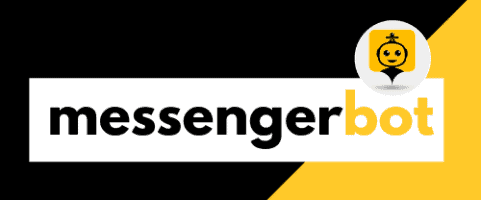Email marketing is an important tool for any business. It can be used to keep customers updated on new products, promote special offers, and more. But which platform should you use for your email marketing? Zoho Mail or MailChimp?
Zoho Mail vs MailChimp: Zoho and Mailchimp are both popular email marketing services, but which one is better? Which service will allow you to grow your subscriber list and send more targeted emails? We’ll explore the differences between these two mailing solutions in this blog post!
What is Mailchimp?

Mailchimp is a popular email marketing solution that helps businesses grow their subscriber lists, send emails, and track the results. With Mailchimp, you can create beautiful email newsletters, target subscribers with specific content, and see how your campaigns are performing.
Mailchimp offers a variety of plans and pricing options to fit your needs.
What is Zoho Mail?
Zoho Mail is an email marketing solution offered by Zoho Corporation. It provides businesses with tools to create, send and monitor their newsletters.
Businesses can also use the platform’s landing page tool to design templates that suit their brand identity or goals of a campaign or mailing list sign-ups. They are able to track how many people open and click-through their newsletters, as well as which subscribers unsubscribe from the list.
Zoho Mail also has a feature that allows businesses to send out automated birthday or holiday greetings. Recipients can either receive these messages as emails or postcards, with customizable designs and texts.
Overall, Zoho Mail provides users with a user-friendly interface to manage their mailing lists, design templates for newsletters, and track analytics of campaigns. It’s an ideal option for businesses that are looking for convenient tools at affordable subscription plans.
Pros of Mailchimp
Mailchimp is a well-known email marketing service with a wide user base. It offers some great features that can be very helpful for businesses of all sizes. Mailchimp is an easy-to-use interface that can be customized to fit your needs. It offers a lot of options for lists and segmentation that make it easy to target users with specific interests, demographics, or behaviors.
It also allows you to track the success rate of each campaign sent through the service. This makes it very clear which campaigns do well and which ones should be avoided next time.
Mailchimp also has a very good reputation for customer service. If you ever have any questions or need help setting up a campaign, their team is available 24/35 to assist you.
Finally, Mailchimp offers some great integrations with other software programs that can make your life a lot easier. For example, it can be connected with many webinar platforms to automatically add registrants from a given list.
Cons of Mailchimp
Mailchimp is not free for business classes.
Mailchimp’s automation features are less advanced than other email marketing services.
For users who want to send newsletters, MailChimp doesn’t offer an integrated solution.
The design editor is limited compared to that of some other providers on the market today.
Overall, Mailchimp is a great option for small businesses on a budget, or those who are less concerned about the quality of their email marketing campaigns.
For more advanced users with larger budgets, Zoho Mail provides many features which make it stand out as one of the top mailing solutions available today.
Pros of Zoho Mail
Zoho Mail is a great option for small businesses with limited budgets.
Zoho Mail offers basic email marketing tools free of charge, including 24/365 support and spam protection.
There are no hidden costs in Zoho Mail’s pricing structure — you pay only when you’re ready to upgrade your features.
Zoho Mail integrates with other Zoho applications, making it easy to manage your business’s online presence.
Cons of Zoho Mail
Zoho Mail may not have all the features that MailChimp does, but it is still a powerful email marketing solution. It offers great templates, automation rules, and segmentation options. Zoho Mail can be difficult to use for beginners. The reporting tools are not as robust as those offered by MailChimp.
Zoho Mail is a great alternative to MailChimp for small businesses that can’t afford its pricing plans, or if your company’s needs are more basic than the features offered by MailChimp. Zoho also has an excellent free plan—you get 300 emails per month and customizable templates with no branding ads.
What sets Zoho Campaigns apart from MailChimp?
Zoho Mail and MailChimp are both great options for email marketing, but there are some key differences between the two services.
Zoho Campaigns offers more features and functionality than MailChimp, including advanced segmentation and targeting, dynamic content, and detailed reporting. It’s also easier to use than MailChimp, with a simpler interface and fewer steps required to set up and send a campaign.
Zoho Mail also offers several features, like auto-responders and automation workflows that allow you to create personalized messages based on user behavior or actions taken within your website. The service is scalable; as your organization grows it can be easily integrated with Zoho CRM for a complete view of your customer base.
Zoho Mail is cheaper than MailChimp, with monthly plans starting at $20/month and free accounts available for users who have fewer than two thousand subscribers on their list. The price goes up based on the number of contacts in your list and the features you need, but it’s still a more affordable option than MailChimp.
Overall, Zoho Campaigns is a more comprehensive email marketing solution than MailChimp, with more features and a simpler interface. It’s also cheaper than MailChimp, making it a great choice for small businesses and organizations. If you’re looking for a powerful, easy-to-use email marketing solution, Zoho Campaigns is the best option available.
Zoho Mail vs MailChimp Features Comparison
Zoho Mail and MailChimp are both great email marketing solutions, but which one is the best for your business? In this article, we compare the features of Zoho Mail and MailChimp to help you decide.
Drag-and-drop workflow

Drag-and-drop workflow is a visual way of creating marketing projects. It is important because it enables marketers to create complex emailing campaigns easily and quickly, allowing them to focus on the actual content instead of spending valuable time building complicated HTML emails from scratch.
Drag-and-drop workflow is also great for creating multi-step marketing projects, such as automated emailing sequences or drip campaigns. With a few simple clicks, you can create an entire campaign that will be automatically sent out over time, without any need to worry about coding or scripting.
Zoho mail’s drag-and-drop workflow is based on the popular WYSIWYG (What You See Is What You Get) editor. It is easy to use and enables you to create complex marketing projects with just a few clicks. The workflow is intuitive and lets you work in a visual way, making it ideal for creating email campaigns, landing pages, and other online content.
Zoho mail’s drag-and-drop workflow is perfect for creating multi-step marketing projects, such as automated emailing sequences or drip campaigns. With a few simple clicks, you can create an entire campaign that will be automatically sent out over time, without any need to worry about coding or scripting. You can also use the workflow to easily create landing pages and follow-up forms, which can be used in any marketing campaign.
MailChimp, on the other hand, doesn’t have a drag-and-drop workflow. Instead, it relies on a series of menus and checkboxes to create marketing projects. While this may not seem like a big deal, it can actually be quite cumbersome and time-consuming to use. Trying to create an email campaign using only menus and checkboxes can be quite frustrating, especially for marketers who are not used to working with code.
MailChimp’s lack of a drag-and-drop workflow can be a major disadvantage, especially when compared to Zoho mail. If you’re looking for an easy way to create complex marketing projects, then Zoho mail is the clear winner. However, if you’re already familiar with MailChimp’s menus and checkboxes, then there is no reason to switch.
In terms of drag-and-drop workflow, Zoho mail’s visual approach is better for creating more-complex marketing projects. Mailchimp, on the other hand, is ideal for simpler campaigns with fewer steps.
Reporting and Analytics

Reporting and analytic features are important to understand how well your marketing campaigns are performing. MailChimp offers a wide range of reports and analytics that allow you to measure your email marketing performance, including opens, clicks, bounces, unsubscribes, and more. You can also see how your email campaigns compare to others in terms of engagement.
Reporting and analytics are important for any business. You can use reporting and analytics to improve your email marketing campaigns over time, increasing the number of customers who read your emails.
Zoho mail reporting and analytics are also important. Zoho mail offers detailed reports on all aspects of your email campaigns, including opens, clicks, bounces, unsubscribes, and more. You can also see how your email campaigns compare to others in terms of engagement.
You can use the reporting and analytics features in Zoho mail to improve your email marketing campaigns over time, increasing the number of customers who read your emails.
Zoho mail also offers a wide range of integrations with other applications, so you can get even more insights into how your email campaigns are performing.
Mailchimp’s reporting and analytics are also important. Mailchimp offers a wide range of reports and analytics that allow you to measure your email marketing performance, including opens, clicks, bounces, unsubscribes, and more. You can also see how your email campaigns compare to others in terms of engagement.
You can use the reporting and analytics features in Mailchimp to improve your email marketing campaigns over time, increasing the number of customers who read your emails.
The reporting and analytics of MailChimp also offer integrations with other applications, so you can get even more insights into how your email campaigns are performing.
In terms of reporting and analytics, both Zoho mail and Mailchimp offer detailed reports on all aspects of your email campaigns. You can use these reports to improve your email marketing campaigns over time, increasing the number of customers who read your emails. However, Zoho mail offers a wider range of integrations with other applications, which allows you to get even more insights into how your email campaigns are performing. Therefore, Zoho mail is the better choice for businesses that want to improve their email marketing performance.
CRM integration

CRM integration is a process in which customer relationship management data from sources such as sales tools, marketing automation systems, and other applications are shared to create a single source of truth for Salesforce.
This helps companies gain more insights into their customers’ preferences and patterns so that they can provide the best possible solutions or services.
Many marketers have found CRM integration to be an essential process in their marketing efforts as it helps them better understand and target their customers.
CRM integration is also important in marketing because it allows companies to track the success of their campaigns and measure the return on investment (ROI) for each campaign.
This data can then be used to improve future campaigns and increase ROI.
CRM integration is a process that should not be overlooked by any company looking to improve its marketing efforts.
Zoho mail’s CRM integration allows users to link their email account with Salesforce.com, Sugar CRM, and Netsuite to manage contacts, leads, and customer relationships more effectively.
This is extremely helpful for marketers as they are able to better understand the preferences of their customers through this integration while also being able to track each campaign’s ROI easily.
Zoho mail’s CRM integration is also very user-friendly and easy to set up.
This makes it a popular choice for many companies looking for an effective mailing solution.
The CRM integration in MailChimp is slightly different from that of Zoho Mail.
MailChimp allows users to integrate their email account with Salesforce, Sugar CRM, and Act! to manage contacts and leads.
However, MailChimp does not offer the same level of integration as Zoho Mail.
For example, MailChimp does not allow users to track the ROI of their campaigns in Salesforce.
MailChimp also does not offer the same level of integration with other applications such as Netsuite.
Despite these differences, MailChimp is still a popular choice for many companies due to its wide range of features and easy-to-use interface.
In terms of CRM integration, Zoho mail and Mailchimp are both popular tools that can help marketers in their efforts.
However, when it comes to CRM integration, many companies find MailChimp’s wide variety of integrations more beneficial than Zoho mail.
This is especially true for companies looking to integrate with Salesforce or Oracle Sales Cloud since there are no CRM integrations offered by Zoho.
Segmentation
Segmentation allows you to divide your email list into specific groups based on common characteristics. This allows you to send more targeted messages that are relevant to the recipients’ interests.
For example, let’s say you own a pet store. You could segment your email list by people who have purchased pets from you in the past and send them a coupon for a certain type of pet. You could also segment people who have never purchased pets from you before and send them an introductory email with coupons to entice new customers.
Segmentation is important because it allows you to interact more effectively with your audience by sending messages that are relevant to their interests, preferences, or previous buying behavior. This increases the likelihood of a positive response and can help you build stronger relationships with your customers.
Zoho mail’s segmentation is very simple, but it is still effective. You have the ability to sort emails into a specific list. The lists can be named whatever you’d like and can be used for both personal and professional use.
Segmentation in Zoho mail allows you to send segmented messages or newsletters that are relevant to your subscribers’ interests, preferences, or previous buying behavior. This increases the likelihood of a positive response and can help you build stronger relationships with your customers.
Zoho mail is a great option for those who are interested in segmentation but don’t have the time or resources to use more complex software.
MailChimp’s segmentation is also simple, but it is more powerful than Zoho mail’s. You have the ability to sort emails into groups that are named whatever you’d like. You can also create custom fields to allow your subscribers to enter information about themselves, which will help you send even more targeted messages in the future.
MailChimp’s segmentation allows marketers to send more targeted messages that are relevant to their subscribers’ interests, preferences, or previous buying behavior. This increases the likelihood of a positive response and can help companies build better relationships with their audience members.
Because Mailchimp offers more customization options, it is a better choice for those who want to send highly targeted messages or newsletters. However, the extra flexibility can also be overwhelming for some users.
In terms of segmentation, Zoho mail and MailChimp are both great options. Zoho mail is simpler but still effective, while MailChimp offers more customization options for those who want more flexibility. Ultimately, the best choice depends on your individual needs and preferences. So, be sure to compare the features of each program before making a decision.
Zoho mail is a great option for those who are interested in segmentation but don’t have the time or resources to use more complex software. MailChimp is a better choice for those who want highly targeted messages and newsletters. However, both services offer different types of customization so you should compare their features before deciding which one is best for your business.
Customer Support

Customer support is the provision of service to customers before, during, and after a purchase. It can be in the form of providing information, answering queries, or resolving complaints. Good customer support is important for two reasons.
First, it helps retain customers by ensuring that they are happy with their purchases. Second, it generates word-of-mouth marketing as satisfied customers tell others about their positive experiences.
Customer support is an important part of marketing as it helps to build relationships with customers and generate word-of-mouth marketing. It is therefore essential to choose a mailing solution that has good customer support.
Zoho mail’s customer support is excellent. It offers a wide range of support options, including phone, email, and chat support. The customer service agents are knowledgeable and quick to respond to queries. They are also patient and helpful in resolving complaints.
Zoho mail’s customer support is one of its strongest features. It offers a wide range of support options, including phone, email, and chat support. The customer service agents are knowledgeable and quick to respond to queries. They are also patient and helpful in resolving complaints. This makes Zoho mail the ideal choice for businesses that need good customer support.
MailChimp’s customer support is also excellent. It offers a wide range of support options, including phone and email help. The staff is knowledgeable and quick to respond to queries or resolve complaints. They are also very patient in dealing with newbies who might not know what they’re doing yet! However, MailChimp’s customer support is not available 24/seven.
In terms of customer support, Zoho mail and MailChimp are both excellent choices. They offer a wide range of support options, and the customer service agents are knowledgeable and quick to respond. They are also patient and helpful in resolving complaints. Which one you choose will depend on your needs and preferences. Zoho mail is ideal for businesses that need good customer support, while MailChimp is a good choice for businesses that want to save money on their mailing solution.
Pricing

Pricing is an important factor when it comes to choosing a mailing solution. Pricing is defined as the process of setting a value on something. For example, “I want to sell my car but I’m not sure what price to put.”
Pricing is used in many industries such as the travel and hospitality industry (i.e., hotel rates), telecommunications (i.e., mobile phone plans), and transportation (i.e., airline tickets). In marketing, pricing is used to determine how much a customer should pay for your product or service.
Zoho mail’s pricing is based on the number of users you have in your organization. The more users you have, the lower the price per user. There are also discounts for annual billing and larger organizations.
Zoho mail has a variety of packages to choose from, and it comes with customizable features for your business’s needs. The package that Zoho mail offers is very
Zoho mail’s pricing is very affordable, and it offers a wide range of features for your business.
MailChimp’s pricing is based on the number of subscribers you have in your mailing list. The more subscribers you have, the higher the price per subscriber. There are also discounts for annual billing and larger organizations.
MailChimp also offers a variety of packages to choose from, and it comes with customizable features for your business’s needs. The package that MailChimp offers is very affordable, and it has a lot of great features for your mailing list.
Mailchimp also offers a free package for small businesses.
In terms of pricing, Zoho mail is more affordable than MailChimp. However, this doesn’t mean it’s the best mailing solution for your business because Zoho offers a limited number of features and services compared to Mailchimp.
Zoho mail has a free version that allows you to try the product; however, its standard edition costs $12/user per month after the first trial month.
Mailchimp’s pricing starts at $20/month with a cost of $0–$12,000 per year depending on how many subscribers you have. The free version allows up to 2000 subscribers and 12,000 emails sent per month. MailChimp also offers discounts for larger organizations which Zoho mail does not.
Email Templates

Email template is a pre-built design that will be the framework for your email. It is important because it helps with branding and can help to boost conversions, as well as prevent you from creating something that looks terrible/spammy/inconsistent across multiple platforms.
Email templates can also be used to drive people down a specific conversion funnel, such as signing up for a webinar or downloading an ebook.
Zoho mail’s email templates are very customizable and robust. You can create a template with drag and drop, or use one of the many pre-made templates that they have available. The best part is that you can A/B test your email templates to see which ones are most effective for your audience.
Zoho mail has a number of different themes available, which is very useful for creating branding consistency across your email communications.
Mailchimp’s email templates feel a little dated and bulky compared to Zoho mail. However, if you have been using it for a while or don’t require much customization then there is nothing wrong with sticking with a tried and true solution.
Mailchimp has a variety of templates available, which are easy to customize. They have several pre-built themes to choose from as well as the ability to import your own CSS if you want to be really creative with it.
The email templates of Mailchimp also support A/B testing.
In terms of email templates, Zoho mail is the clear winner. It has more customization options, a better selection of themes, and supports A/B testing. If you are looking for a powerful and customizable template solution, then Zoho mail should be your go-to option. Mailchimp is still a great choice if you don’t require as much flexibility or if you are already heavily invested in the Mailchimp platform.
Subscriber Management

Subscriber management is a very important aspect of marketing. It is used to maintain lists and contact your clients, customers, partners, etc.
There are two main components – one is list building which helps you to build your email database by collecting subscribers from different sources such as newsletters, forms on websites, etc., another is list segmentation which helps you to sort the subscribers into groups based on certain factors such as location, interests, etc.
Subscriber management also helps you to track the success of your marketing campaigns by providing information such as open rates, click-through rates, etc.
Subscriber management plays a very important role in effective and successful email marketing. It helps you to target your customers more effectively and send them relevant content which increases the chances of conversion.
Zoho mail’s subscriber management is very simple and easy to use. It allows you to collect subscribers from different sources, segment them into groups and track the success of your marketing campaigns. In addition, it also provides detailed information about open rates, click-through rates, etc. which helps you to improve your marketing strategies.
Zoho mail’s subscriber management is very effective and efficient.
Mailchimp’s subscriber management, on the other hand, has a different approach than Zoho mail. It allows you to collect subscribers from various sources without segmenting them which can be beneficial in some cases where there are no specific targets. It also provides detailed information about open rates, click-through rates, etc., but the drawback is that it doesn’t allow you to track the success of your marketing campaigns in real-time which can be problematic for businesses with tight deadlines.
Mailchimp’s subscriber management is very flexible and efficient; however, it might not work well for some types of businesses.
In terms of subscriber management, Zoho mail and Mailchimp are both very effective and efficient tools. However, Zoho mail is more simple and straightforward to use while Mailchimp offers more flexibility. It ultimately depends on the needs of the business as to which tool would be a better fit.
Customization

Customization is the idea of changing or modifying a product, service, or process to meet specific needs and requirements.
Every company has different target audiences that they need to reach with their marketing efforts. Customization allows for these companies to cater specifically towards those customers and communicate more effectively through email marketing campaigns (and other mediums like social media). Because every audience is different, customization ensures that the marketing message will be received in the correct context.
Customization is important in marketing because it ensures that the target audience will receive a campaign and be able to understand what is being communicated.
Zoho mail’s customization options make it easy to create a mailing list and scale your marketing efforts. Each customer can build their own lists based on demographics such as age, gender, occupation, etc., which means that all emails sent will be relevant to the target audience.
Zoho mail’s customization options also allow for specific targeting of customers through hyper-segmentation; this is the ability to target very small groups of people with pinpoint accuracy. This ensures that each email is relevant to its recipients and increases the chances that they will take action (such as clicking a link or making a purchase).
Zoho mail’s customization options are an important part of its appeal, as they make it possible to create highly relevant and targeted campaigns.
MailChimp offers a wide range of customization options that makes it possible to reach nearly any audience. Campaigns can be tailored by demographic information such as location, age, or gender. MailChimp also allows for targeting specific customers through their purchase history and interests.
MailChimp’s customization options are an important part of its appeal, as they make it possible to create highly relevant and targeted campaigns.
Mailchimp’s customization options are an important part of its appeal, as they make it possible to create highly relevant and targeted campaigns.
In terms of customization, Zoho mail and MailChimp offer similar options. However, Zoho mail’s hyper-segmentation capabilities make it more precise in terms of targeting customers. Additionally, Zoho mail’s ability to create mailing lists makes it easier to manage campaigns and scale marketing efforts. Therefore, Zoho mail is the better choice for companies that wish to customize their email marketing campaigns for their specific target audience.
Frequently Asked Questions
What is Zoho campaigns?
Zoho Campaigns is Zoho’s marketing automation app that helps users create and manage email campaigns, landing pages, forms for collecting leads.
Zoho Campaigns takes all of the information from your blog post or web page content and stores it in a database where you can easily reference these contacts at any time. You can also create custom fields to store additional information about each contact, like their city or state. This is really helpful if you want to target your marketing efforts specifically to certain geographic areas.
Zoho Campaigns also offers a wide range of integrations with other apps, including CRMs and survey tools, so you can track the success of your campaigns and collect valuable data.
Which is the best landing page builder?
The best landing page builder is the one that best suits your needs. If you need a lot of features and customization options, then Aweber or LeadPages are probably the best options. If you’re looking for something more simple, then I would recommend using Unbounce or Instapage. Whichever option you choose, make sure it’s easy to use so you don’t have to spend a lot of time working on the back end.
What is better Zoho campaigns or MailChimp?
Zoho campaigns and MailChimp both serve the same purpose of helping businesses build email lists, send out promotional emails to their users through those mailing lists.
Zoho campaigns have a slight edge over MailChimp in terms of price, as it is free for up to two thousand subscribers. After that, the pricing is almost identical. However, Zoho campaigns offer more features than MailChimp, such as automation and lead scoring. If you are looking for a powerful yet affordable email marketing tool, then Zoho campaigns may be the better choice. However, if you don’t need these advanced features and can do with fewer options then MailChimp would be a good option for your business.
What are the problems with Zoho in terms of email marketing?
Email template customization is a pain. You have to use HTML, which means you need some coding knowledge. With MailChimp, they provide pre-designed templates for your brand and it’s easy enough to adjust the colors or other elements without having any technical expertise since everything is drag and drop with no code required. Zoho also makes you use HTML. Additionally, Zoho has a limited number of integrations with other apps and tools that are important for marketers — like Salesforce, SurveyGizmo, or Slack.
Is Zoho CRM calendar worth it?
Zoho Calendar is perfect for businesses that need to manage time and resources better. It can be integrated with Zoho CRM so you can track activities such as sales calls, meetings, or appointments related to your customers. Zoho CRM is an excellent sales management tool that helps you manage customer relationships.
This is why choosing Zoho CRM and calendar together can be a very effective way to boost your productivity. It also enables employees to work on different projects at the same time without stepping on each other’s feet or making mistakes due to lack of communication. If you are looking for an all-in-one solution, Zoho CRM is the right choice for your business.
Conclusion

MailChimp and Zoho Mail are both great options for email marketing, but they have different strengths. MailChimp is better for small businesses that want to send a few campaigns each month, while Zoho Mail is better for larger businesses that need more features and automation. Ultimately, the best mailing solution depends on your needs and budget.





